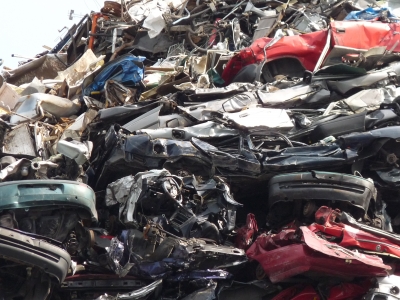The recent surge in ferrous scrap prices “did not last long enough to adequately repair the collection system”, the latest meeting of the BIR Ferrous Division was told by its President, William Schmiedel of Sims Metal Management in the USA. As a result, he added, there was little evidence of supply overhang in the market.
Addressing delegates in Berlin, Schmiedel said ferrous scrap had been riding “a roller-coaster” in the early months of this year. Within recent weeks, Turkish mills had raised what they were prepared to pay for HMS from 2016 lows of around US$ 175 per tonne to well beyond US$ 300 – a reflection, he argued, of earlier low prices having undermined the collection structure. Chinese billet prices had been equally mobile over a short period, soaring to a 28-month high and then slumping 30% before mounting a small recovery of late.
Schmiedel also emphasised how the huge number of contracts being traded on China’s futures exchanges was adding to uncertainty in the physical market.
In his regional review of the ferrous markets, Tom Bird of UK-based Mettalis Recycling also reflected that “a week is a long time in the scrap business”. Recent weeks, indeed, had witnessed far higher prices as customers returned to ferrous scrap from “unreliable billet supplies”, he contended.
Some major buyers, including Tokyo Steel in Japan, had implemented significant ferrous scrap price reductions in May and further cuts were anticipated in leading markets for June, according to Bird. However, he forecasted “a brighter market” and greater stability later into this year.
Top-ranking analyst Jason Schenker, founder and President of leading commodity and financial research firm Prestige Economics of the USA, sought to address some of the key factors behind what he described as “a recession of confidence”. Notably in his guest presentation entitled “Outlook for ferrous markets in a climate of global economic uncertainty”, he expressed concern that the rising trend in steel prices “might not be stable”.
Schenker cast doubt on IMF forecasts of 6.5% real GDP growth in China for 2016, pointing out that the country had been in a manufacturing recession for 16 of the past 17 months. In the USA, meanwhile, manufacturing data had shown contraction for five consecutive months through February 2016. On the upside, he added, the Eurozone was experiencing “modest expansion”.
Also at the meeting in Berlin, BIR Ferrous Division Statistics Advisor Rolf Willeke presented the seventh edition of “World Steel Recycling in Figures”. He noted that, in 2015, the year-on-year decrease in scrap-intensive electric arc furnace production of 5.4% to around 403m tonnes was steeper than the 2.3% decline in basic oxygen furnace output to some 1.201bn tonnes.
In addition, Willeke observed that most of the world’s leading steel scrap importers cut their overseas purchases last year, among them top buyer Turkey (-14.8% to 16.251m tonnes). However, some significant year-on-year import increases were also recorded, including India (+17.7%), Mexico (+62.1%) and Belarus (+10.3%). Regarding exporters, the EU-28 continued to lead the way in 2015 despite an 18.9% reduction in its overseas shipments to 13.743m tonnes while US exports dropped 15.4% to 12.976m tonnes.





